Naoshima Travel
About Naoshima
Naoshima is an island town located in the South of the Japan, famous for its art. Purposely rebuilt to attract visitors, the sole sightseeing here is looking at art and visiting the art museums. It could be a tourist trap but remains quite impressive that the island is full of works by famous artists and architects— from Yayoi Kusama to Monet. The punch line: this island is like an art sculpture theme park.
What we did
The only activity to do on this island is to look at art, art, and more art. There are several big museums on the island but outside museums you’ll stumble across various sculptures and installations all around the island as well. If you wish to see all the exhibitions around the islands, and you’re visiting during the Setouchi art festival that comes to Naoshima and nearby islands once every three years, the best bet would be to purchase the Passport. This includes the entrance fees for all the major museums and installations for one ticket. You can of course cherry pick only those you want to see and pay separately, but it’s slightly cheaper to hit all the main spots with the Passport than without it.
Sightseeing:
1. Benesse House
Benesse House will be the first thing that pops up while searching about this island. This iconic building is part accommodation and part museum, and the estate it’s on is large. It will take you quite some time to look at every corner of it. The museum building is located on top of the hill looking out at sea; the view is quite breathtaking.
Designed by the Tadao Ando, the structure follows the natural forms of the landscape and his creative use of natural light is comes though nicely. It was unexpected to see living plants inside the cracks of the buildings, which made the building feel warmer despite being made of cold concrete. To be honest, the most impressive part of this museum is the building itself. Ando also designed the impressive Oval. The Oval is accessibly only to hotel guests staying in one of it’s six guest rooms, so if that’s on your agenda make sure to book well in advance.
The museum and beach, are accessible to the public. Ufortunately you cannot ride bikes directly to or inside the estate, so you will have to walk or take the shuttle bus up the hill instead. More information can be found here.
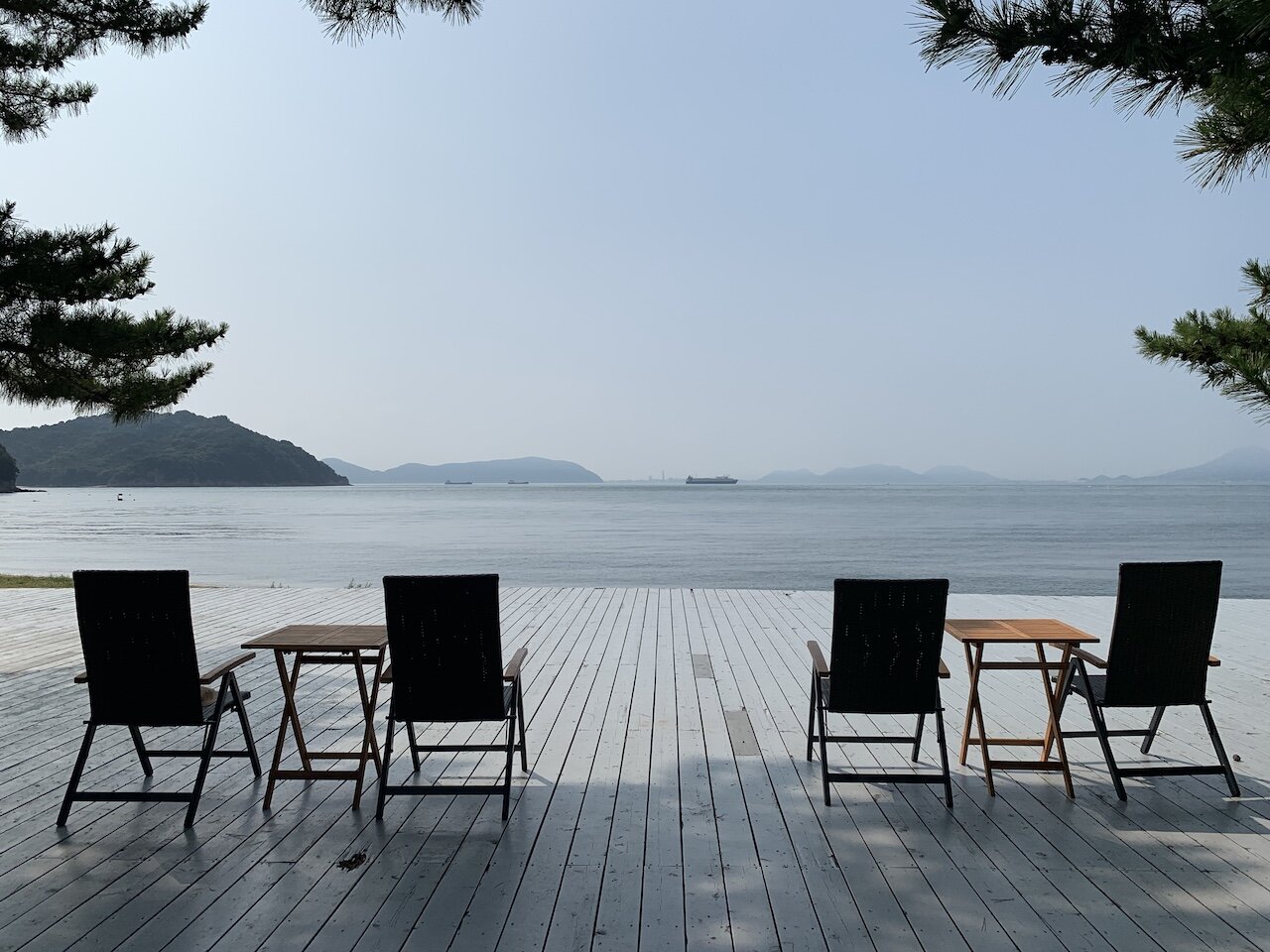
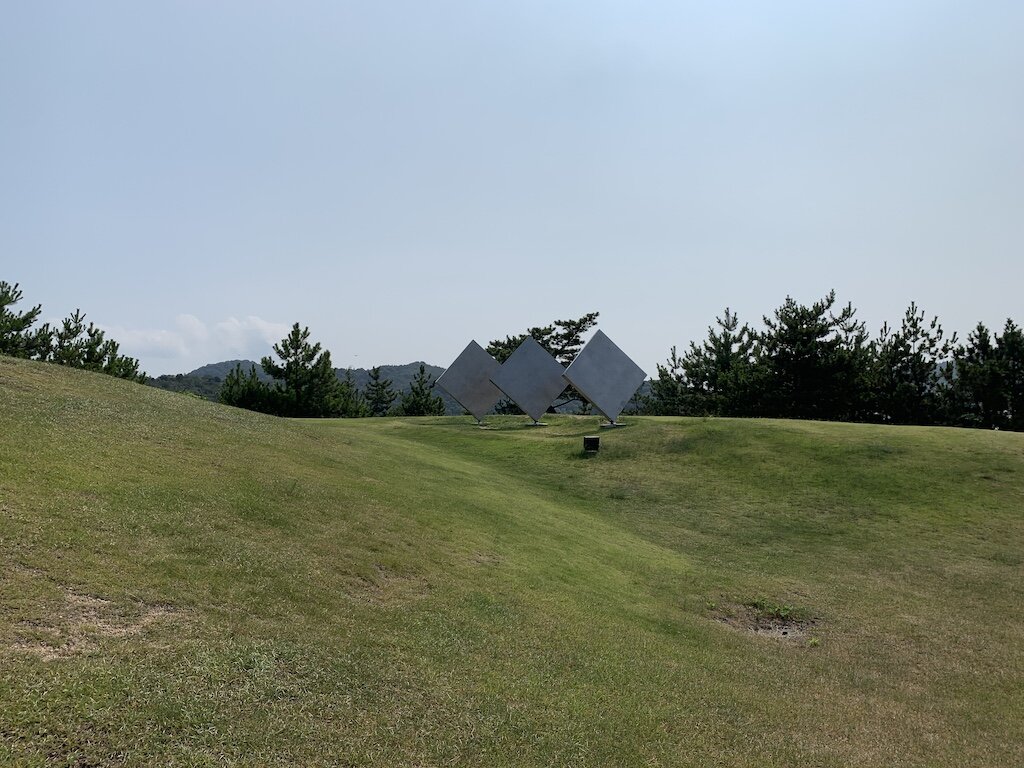
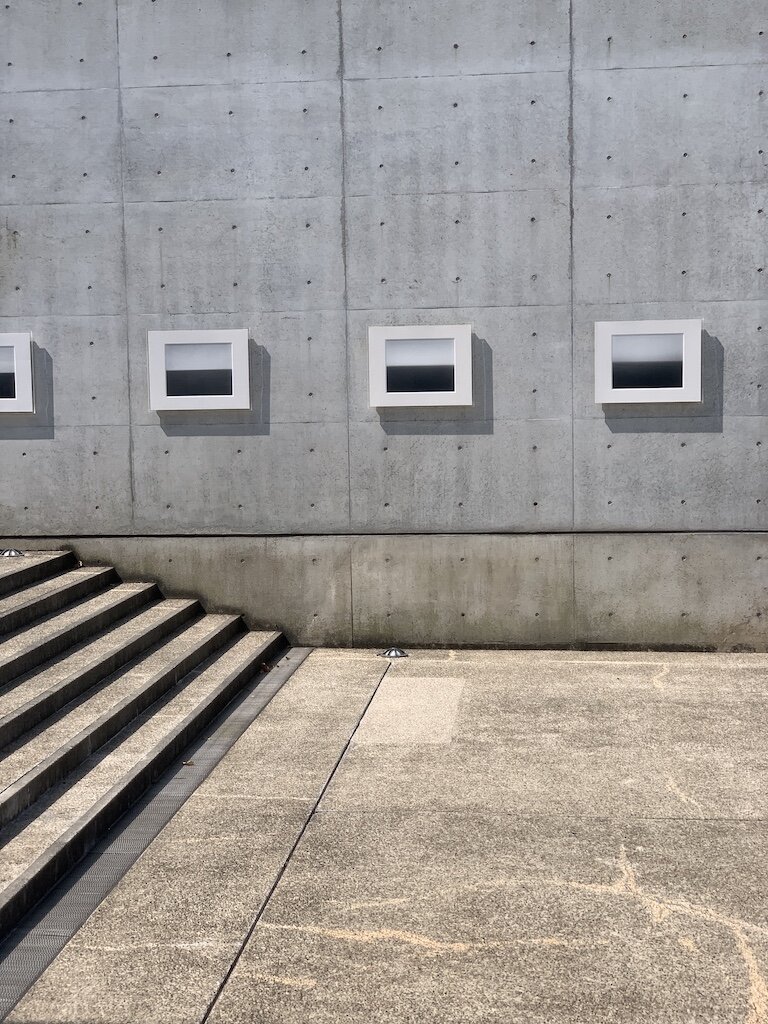
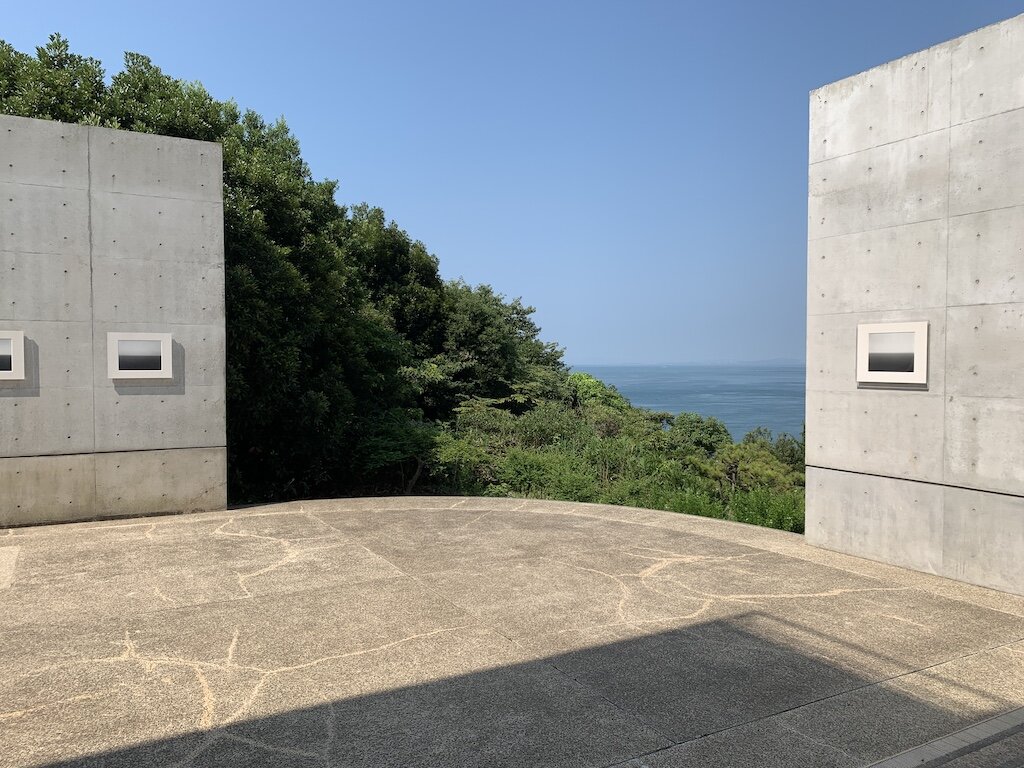
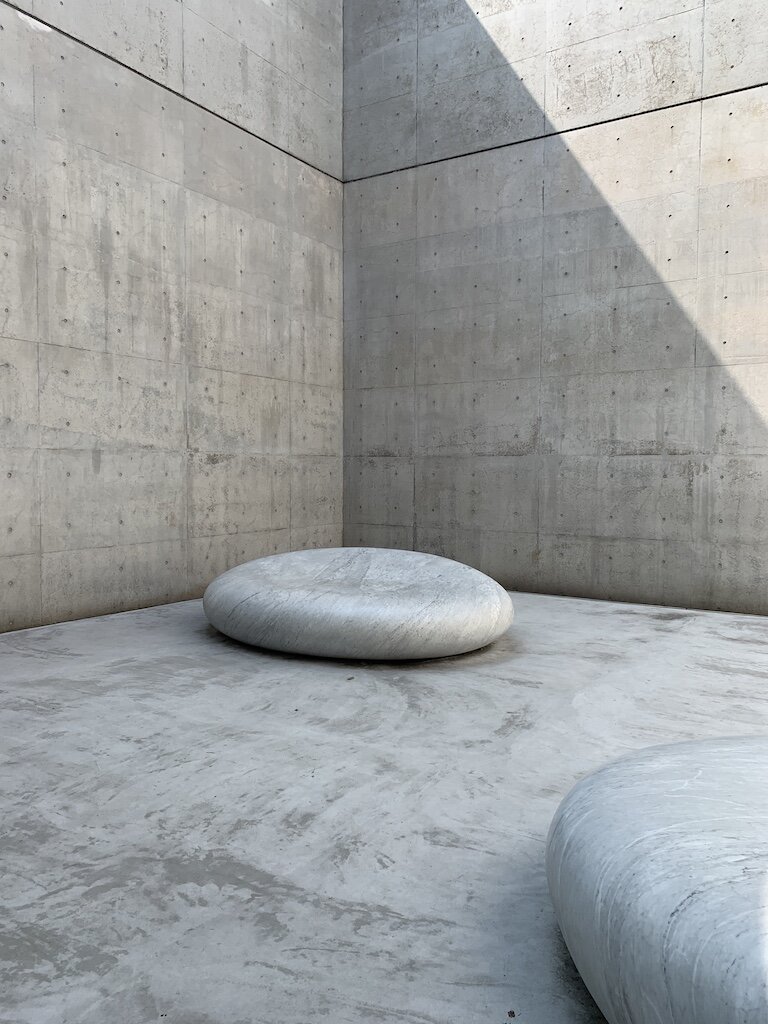
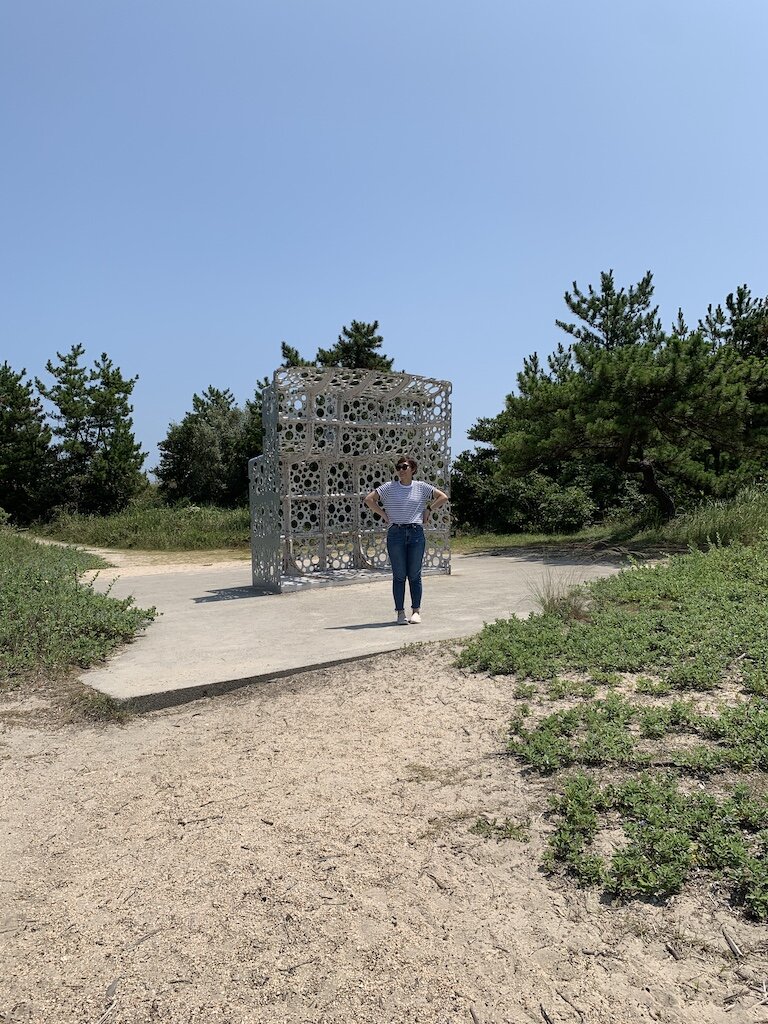
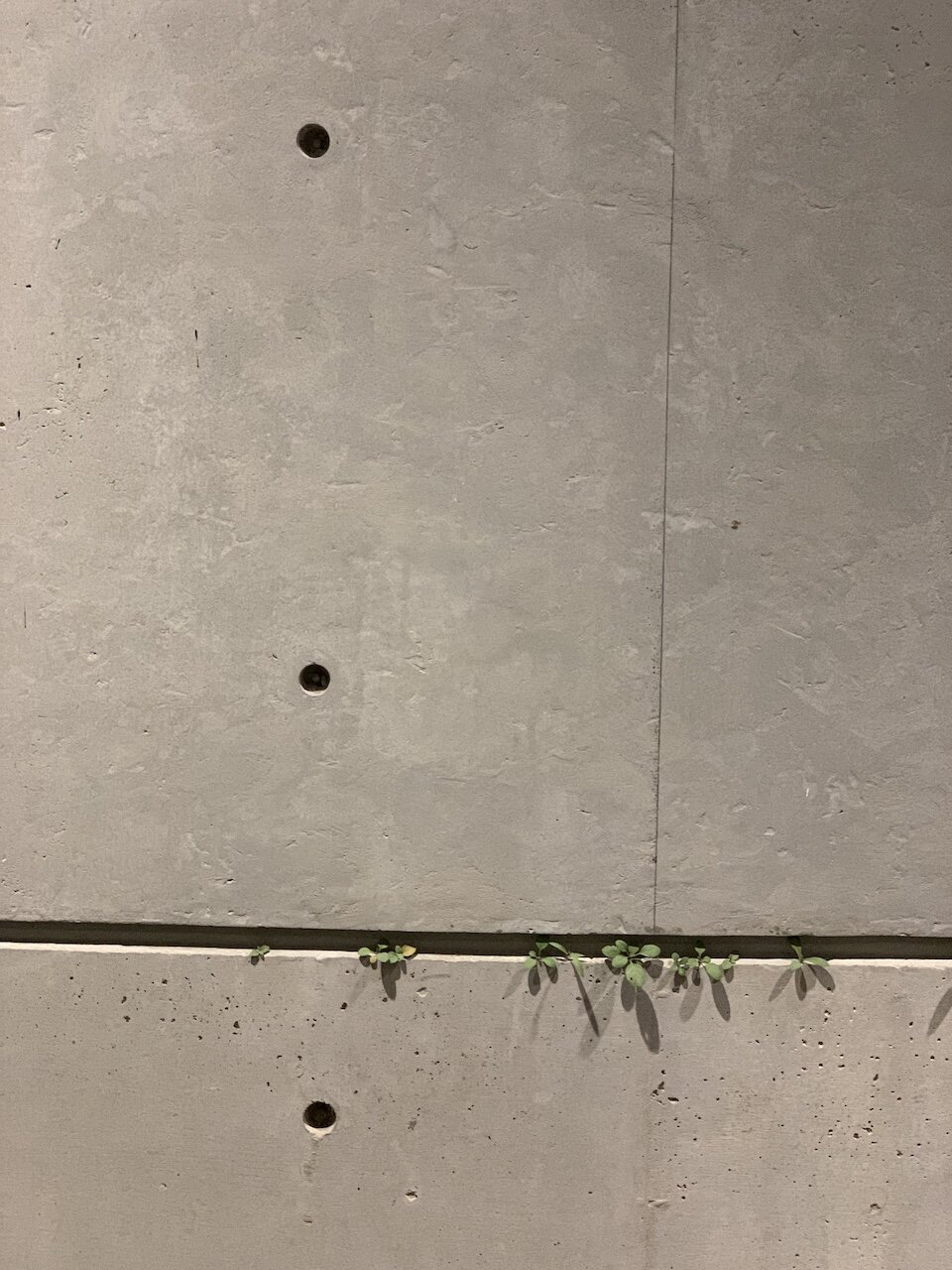

2. Chichu Art Museum
This one was our favorite out of all the art spots we saw, and we highly recommend a visit to this museum. The Chichu Art Museum is worth going for two reasons: Monet and Tadao Ando. The museum is built underground so it won’t be disturbed by its surroundings and visitors can focus on the art. Tadao Ando delivers this promise exactly.
It’s not often you get mesmerized by something. The experience of seeing the museum’s 5 Monet pieces is truly unforgettable. Even if you’ve seen his work before, the room the Monets were presented in was very unique. The paintings were suspended in an all white room, and from the edge of the ceiling natural light came through, lighting up the room in that signature Ando way. This somehow simple thing gave the space something extra, and it only could be described as if we were in a giant light room. The light was so soft and soothing, where the masterpieces were elevated even further.
For this, Naoshima is worth the trip. Unfortunately, no photos were allowed inside the museum and to be honest, we wouldn’t have able to capture the true essence of the work and the space anyway.
Entrance to the Chichu Art Museum is done via timed tickets that must be purchased in advance online. You’ll be allowed to enter at the exact times indicated on your ticket and no earlier, so it’s best to plan the rest of your itinerary around the tickets for this stop.
3. Other art exhibitions and pieces
There are many art houses, installations, and small exhibitions going on in town. Some have time slots but mostly you can wait in line to see. Half the fun is to improvise as you go and just visit the places that intrigue you.
Yayoi Kusama’s work: there are two sculptures of this pop-modern artist’s work around the island. Her iconic dotted pumpkins rapidly became the icons of Naoshima island. You are greeted by her “Red Pumpkin” when you arrive at the Miyanoura Port, and you are once welcomed by the “Yellow Pumpkin” in the pier near Gotanji Bathing Beach. There is no explanation or title for her sculptures, so if you are not familiar with her work, it’s better for you to google in advance. Not too familiar with her work myself, I enjoyed the juxtaposition of the vibrant pumpkin placed in a calm setting, creating a surreal and out of place feeling. I think pumpkins are an odd subject to begin with. Not only iconic to Naoshima, Kusama’s work is significant in the art world, and worth checking out.
I Love Yu: it’s an ordinary bathhouse with a bit more ornament. The water isn’t special per se, but this bathhouse is far more decorated than your average bathhouse. Even though there are people who will greet you, you must purchase your tickets via vending machine. There is no country side charm here, it’s all the way tourism, but it was nice to soak out the body aches that come with staying on your feet all day to sightsee.
Naoshima Hall: this place is not really displaying art and not really mapped on the tourist route, but it’s quite nice to visit if you are into architecture. It’s a hall that showcases some really nice elements of Japanese architecture. Read more about the hall in this article by Dezeen.
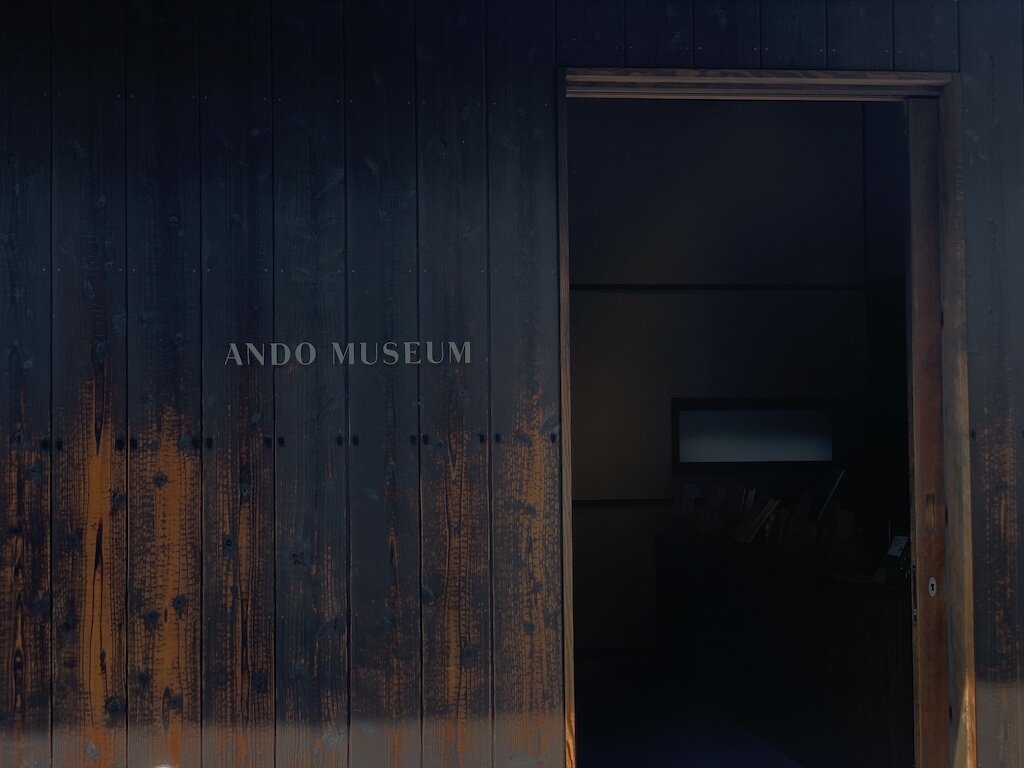
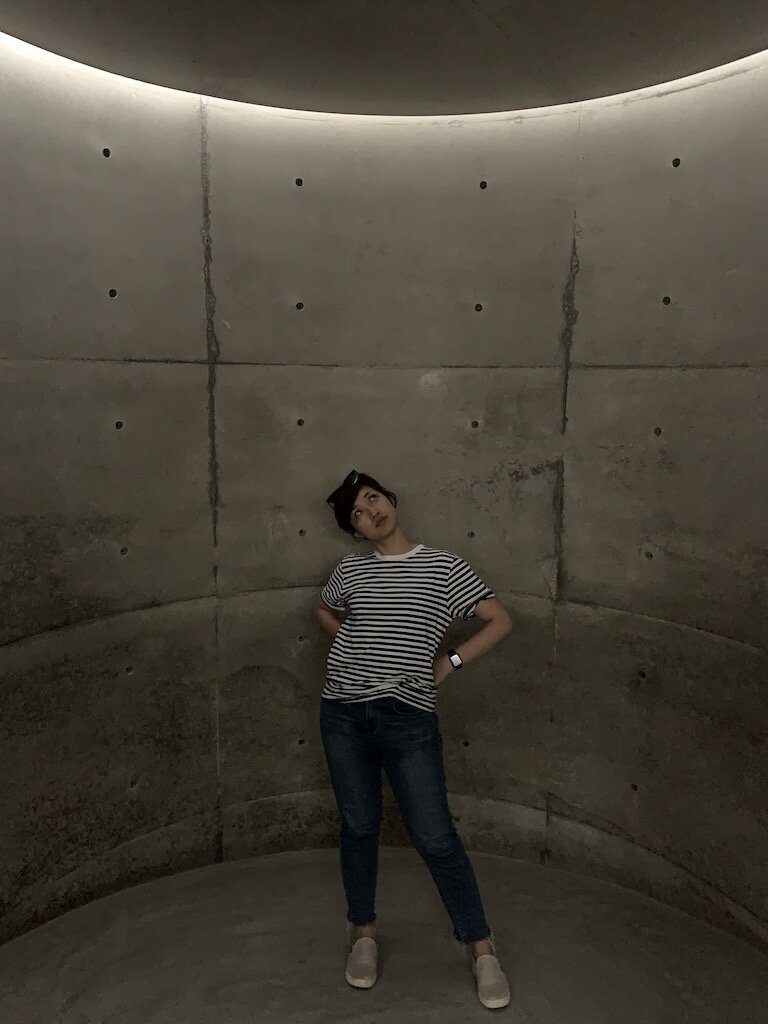
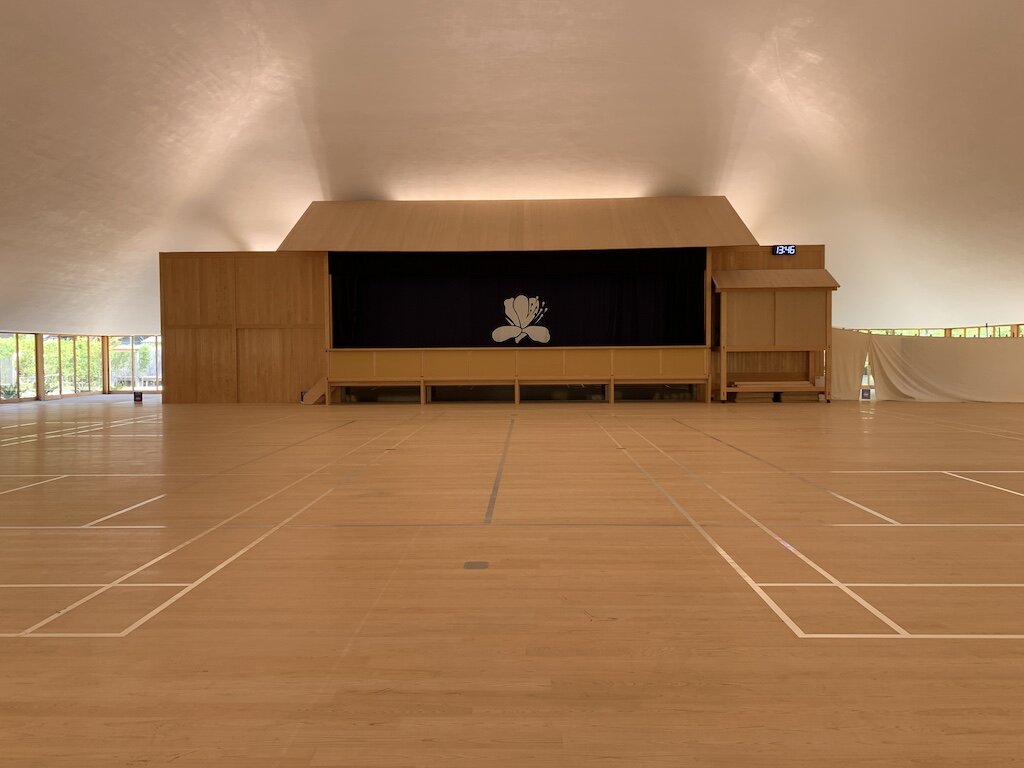
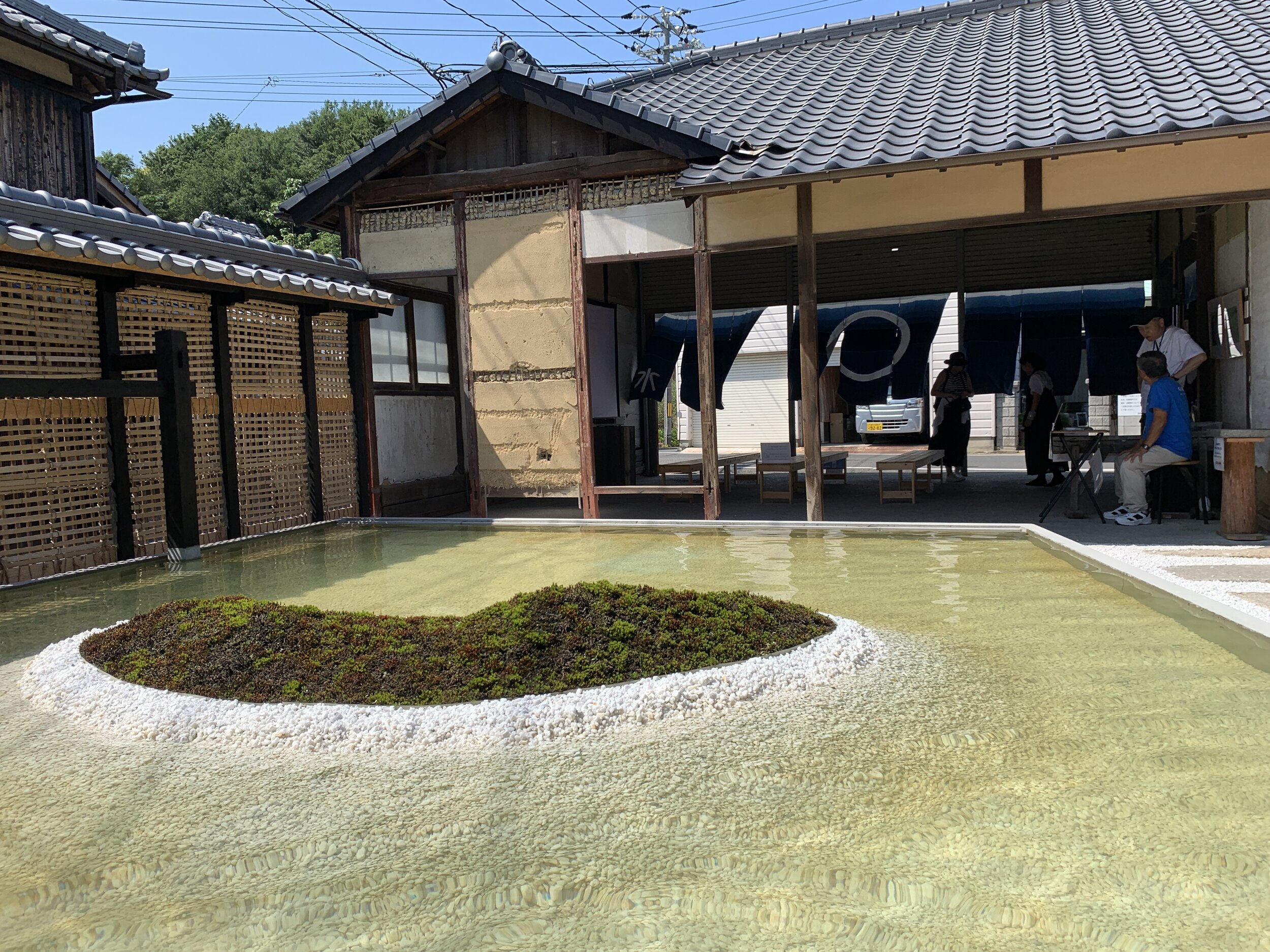
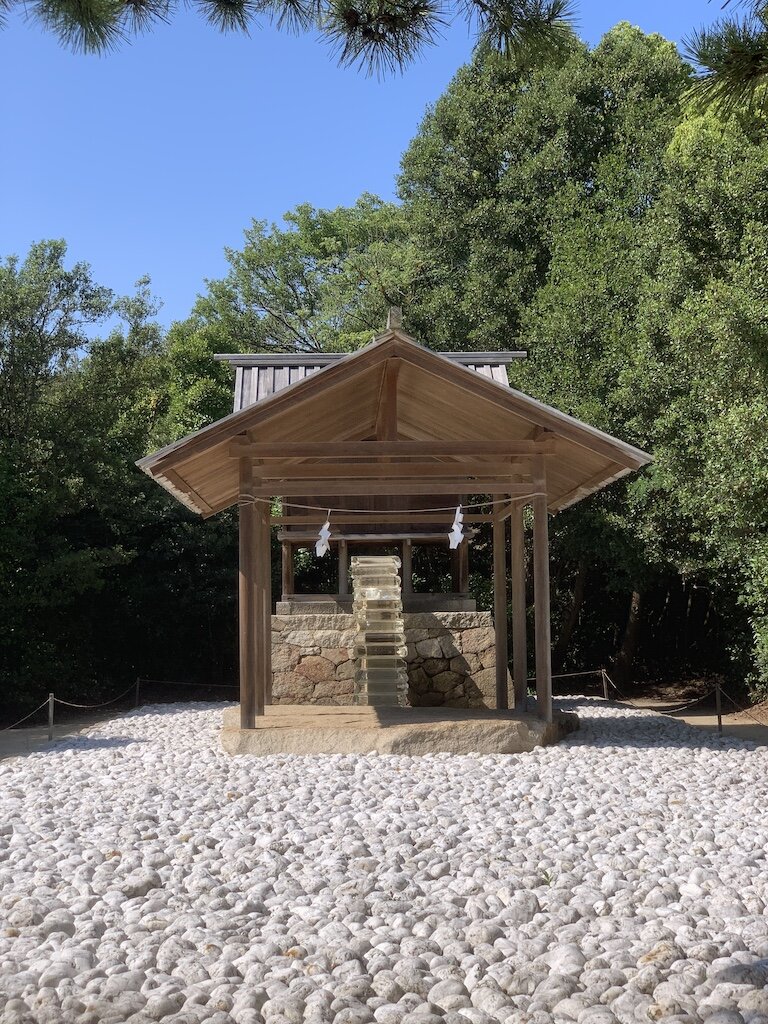
4. Gotanji Bathing Beach
There’s nothing more refreshing than swimming in the ocean to cool you off on a hot summer day. Thankfully, you’re allowed to swim in Gotanji Bathing Beach during summer. We were clearly not the only people with this idea. There were lots of families enjoying the beach when we were there, and the water was calm and clean. There is also a camp site around the beach where you can sleep in a yurt if camping is more your style.
The eating
Food choices get much simpler if there aren’t many places to choose from. The island has good amount of restaurants that serves tasty Japanese food, and there is always the konbini, which translates as “convenience store” in English but is oh so much more in Japan.
Vegetarian Lunch Set
Looking to find those Japanese longevity secrets? This lunch explains a lot. Joking aside, it was a super light and balanced lunch.
Place: Asiunao
Address: 761-1 Miyanoura, Naoshima, Kagawa District, Kagawa 761-3110, Japan
Japanese Ramen
Need I need to say more? There are lots of places you can eat ramen, go inside any of them! We tried this one and found it hit the spot.
Place: Raumen Tsumu
Address: 4780-7 Naoshima Town, Kagawa District, Kagawa 761-3110, Japan
Okonomiyaki and Yakisoba
Here you can get solid okinomiyaki and other things.
Place: Okonomiyaki Umikko
Address: 4778-8 Tsumuura, Naoshima, Kagawa District, Kagawa 761-3110, Japan
Shaved ice
Place: おかしとコーヒー
Address: 〒710 Kagawa, Kagawa District, Naoshima, JP 761-3110
Getting there:
To get to Naoshima island, you must ride a ferry from somewhere, and since we were coming from Seoul the most convenient one was Takamatsu Port. It’s much less common than coming from the North, via Uno, which is used more by tourists coming from Tokyo or Osaka. We were staring our journey from Seoul, though, so took a plane to Takamatsu and then rode the ferry to Naoshima. The key to any island travel is to look up the ferry timetable in advance and be on time for it. Here is the timetable from Takamatsu.
How we got around in Naoshima
Bicycles are the best option for getting around the island. Especially electric bicycles! These will change you life. You can rent bicycles from a few spots on the island and there are several to choose from. Of course there are buses, but those have time tables that aren’t that frequent. After all, the buses are on the island time clock, so you should expect at least a 20 minutes wait for the next but to come.
Where we stayed
If you want to stay at a hotel, your only option will be Benesse House. We were not able to stay there since we planned the trip last minute and every room was booked, but this will be great place to enjoy the art part of this art island. It is also usually the most expensive accommodation in town.
The second option is guest houses in town. These are usually Japanese traditional housing, so you should expect floor bedding and seated (not standing) showering. There are many options to choose from, and you can use Airbnb or other services to book.
Another option could be the yurts at the camp site near the beach. This one also seemed to be a popular option in the summer, since every yurt was booked. We came down to witness the sunset at the beach ourselves and were not disappointed with the view.


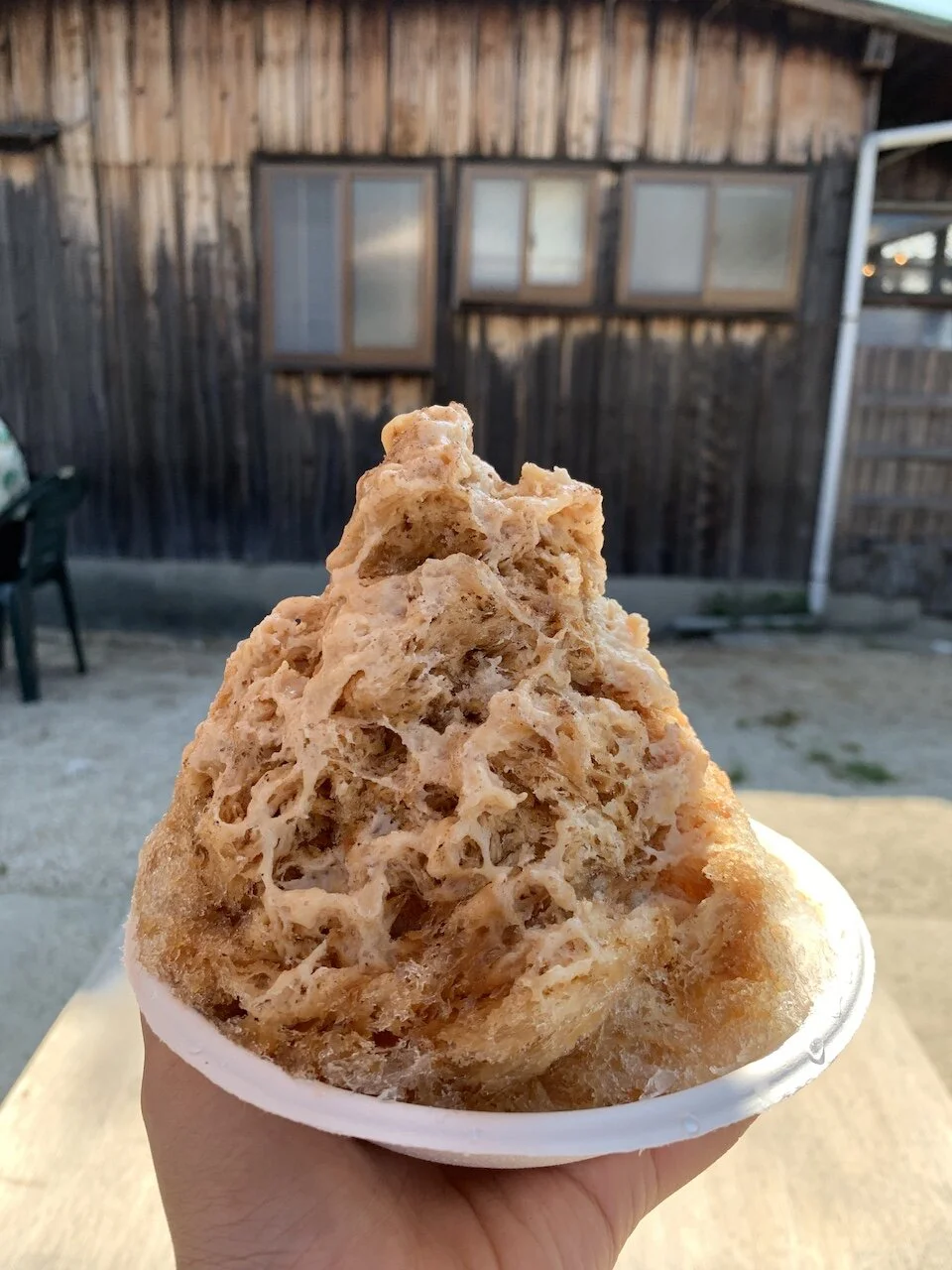



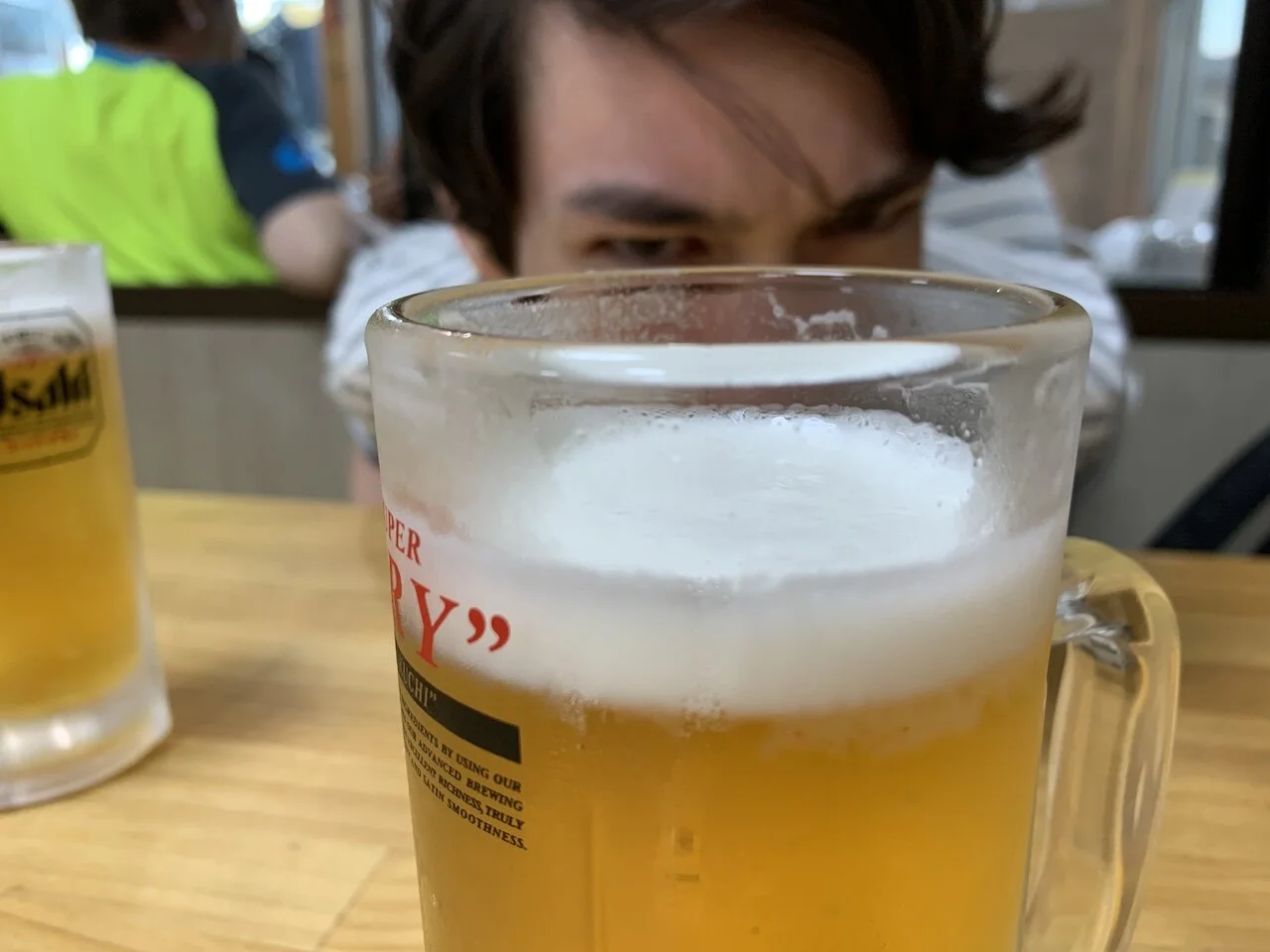









Best place to get oysters in South Korea